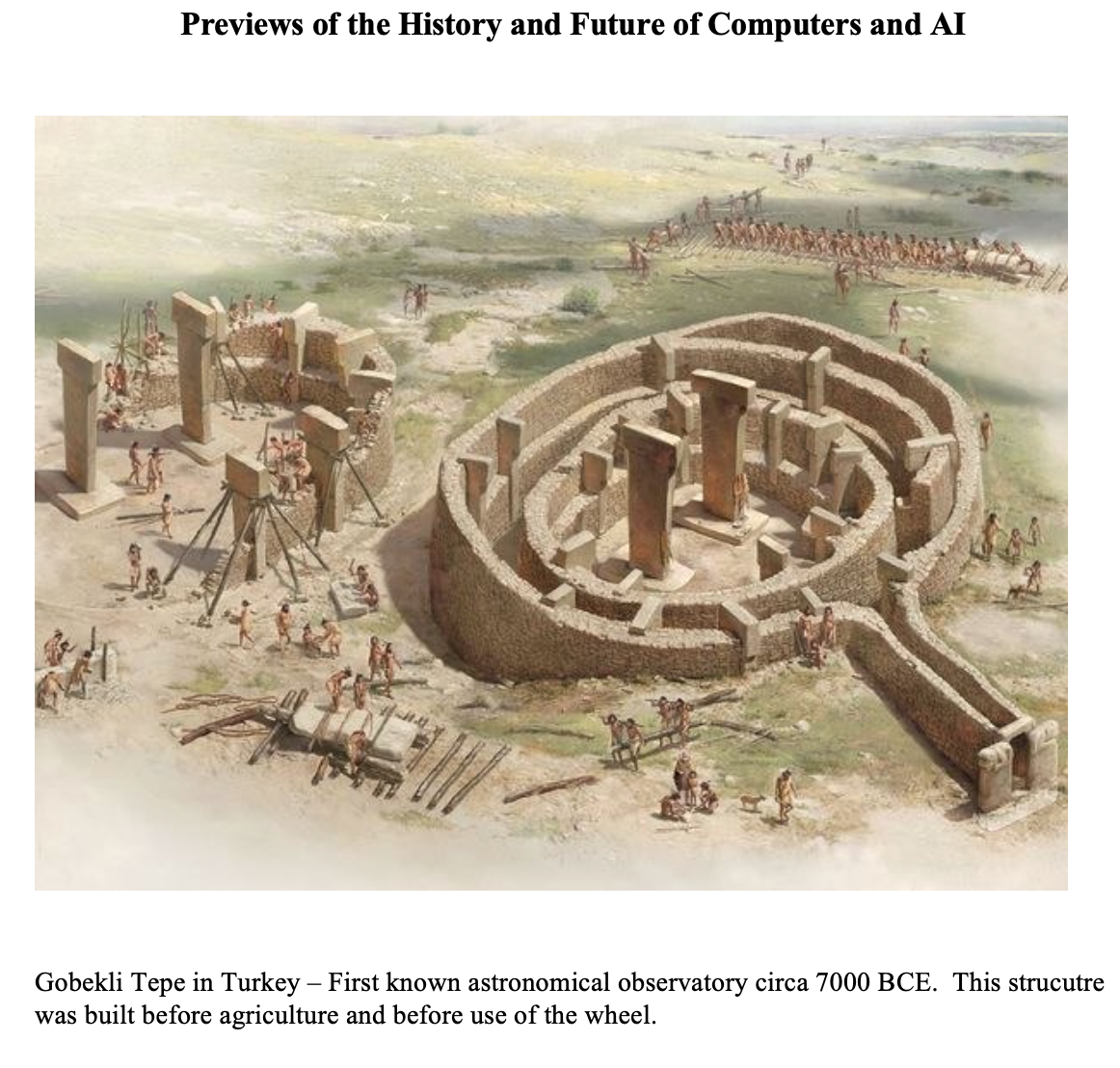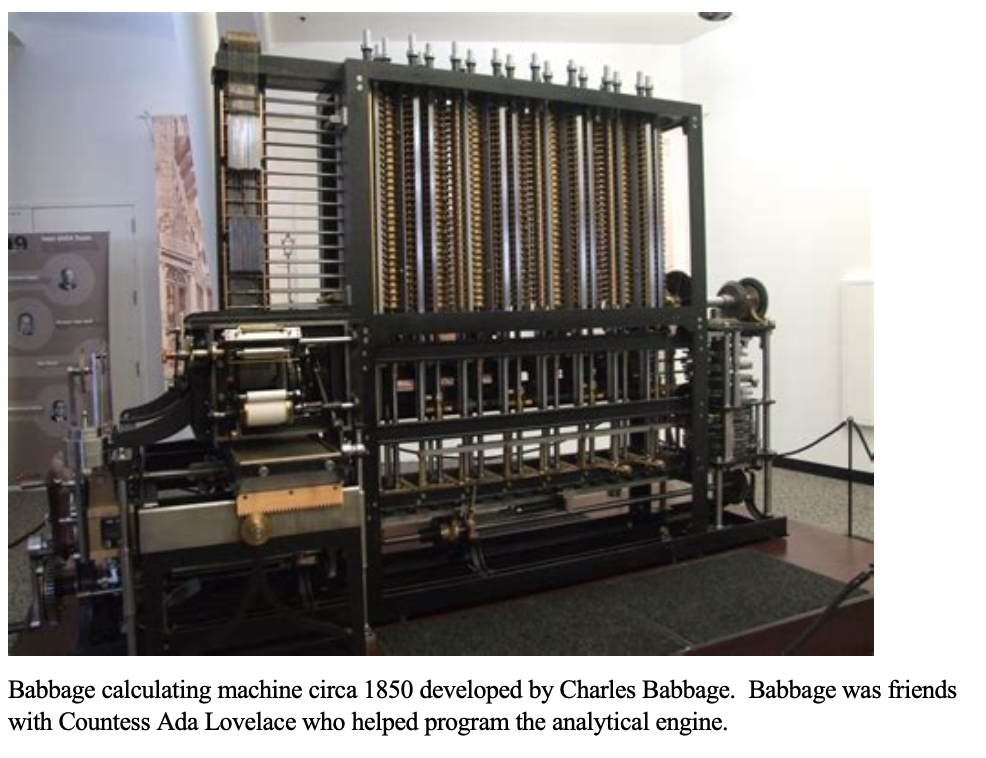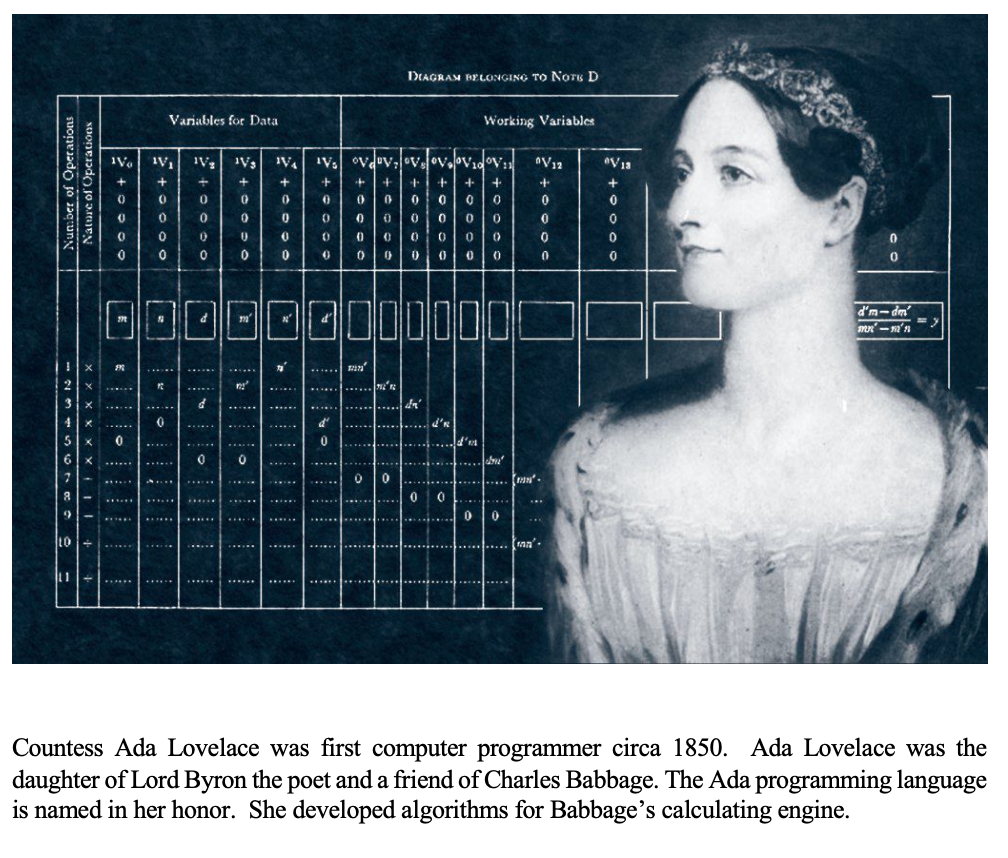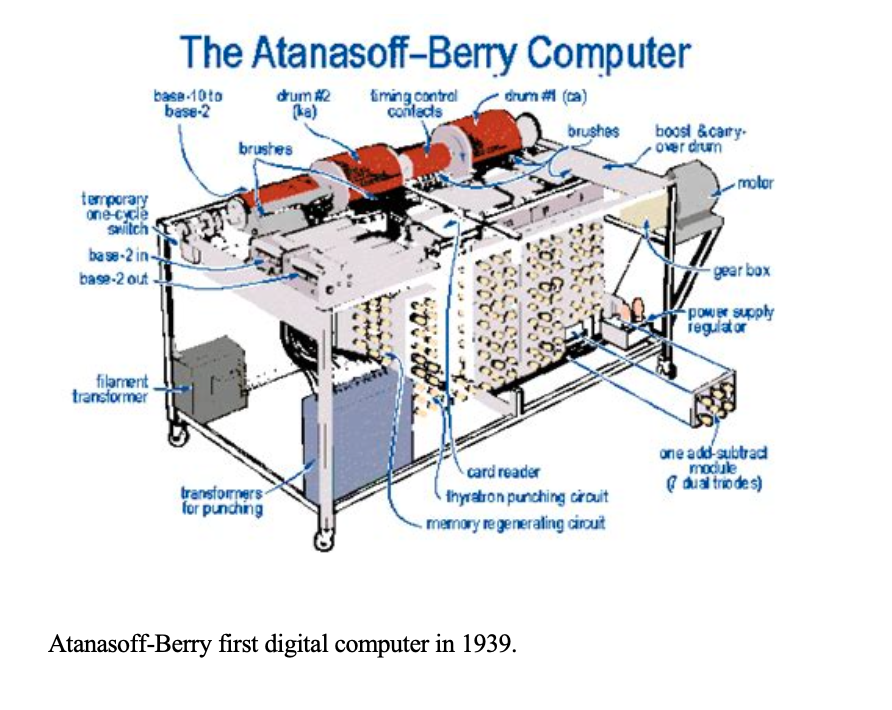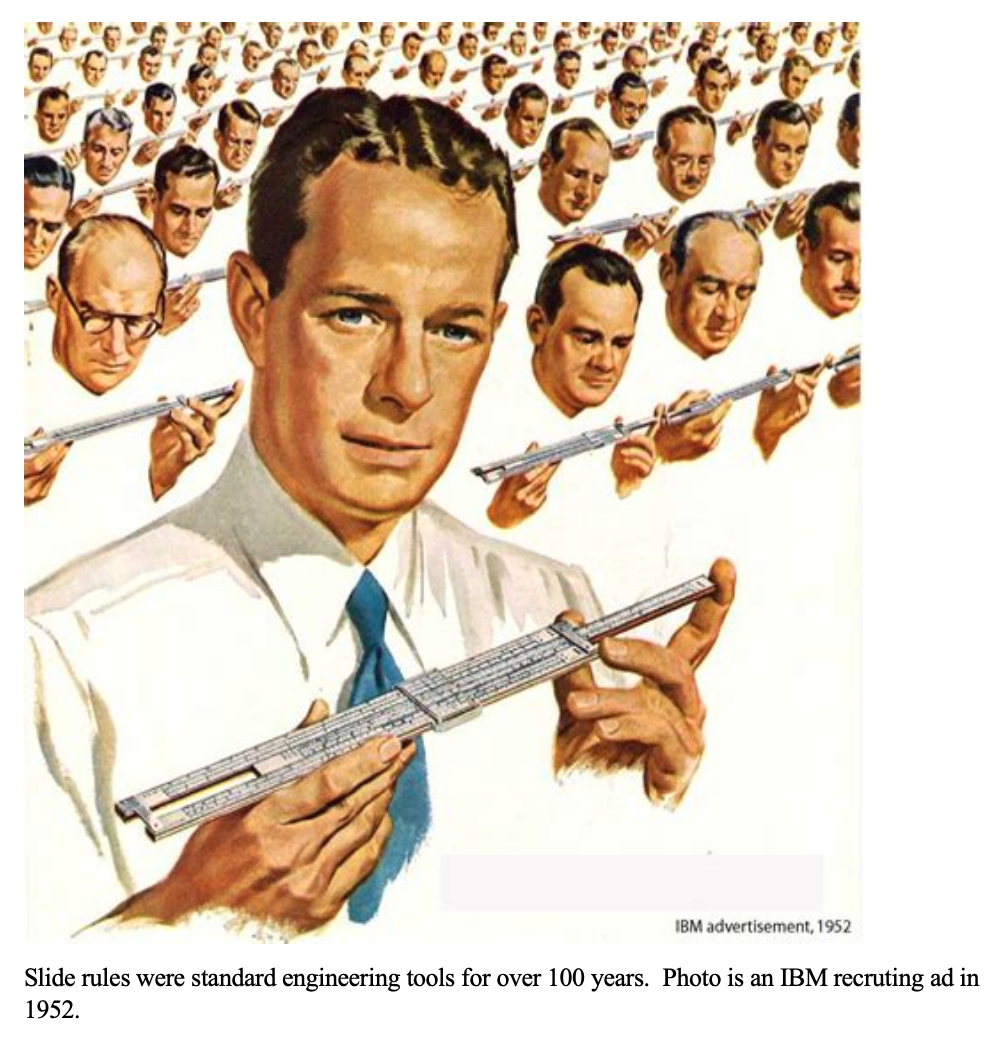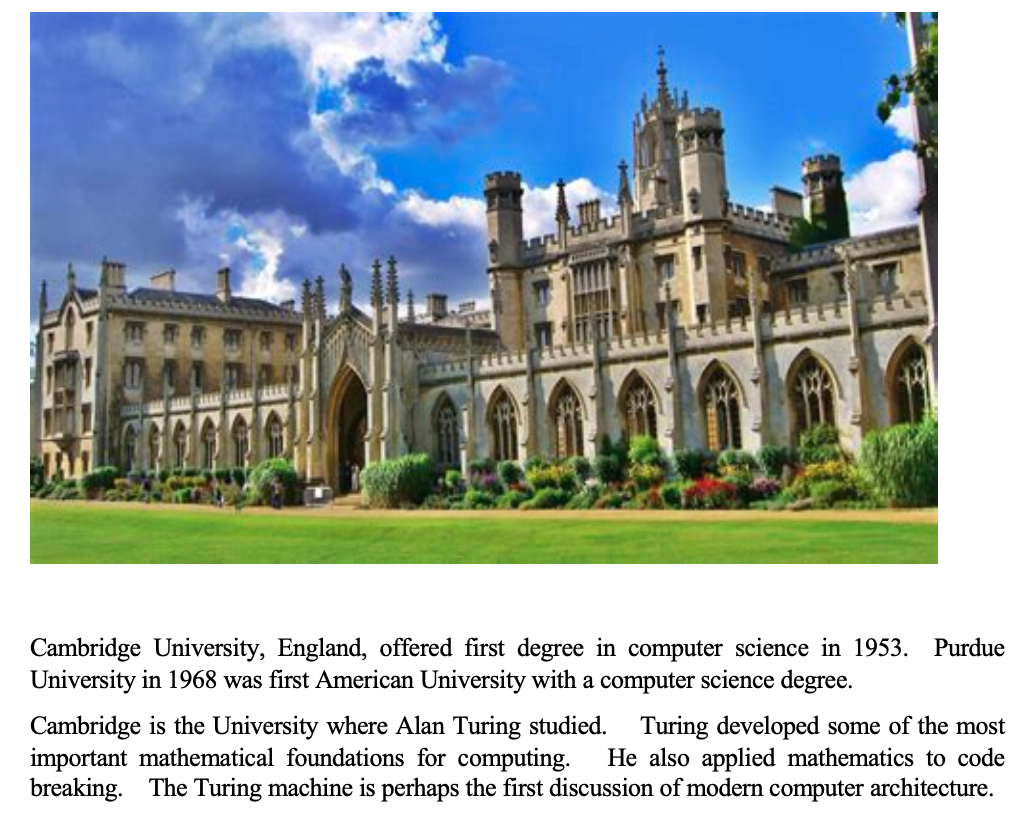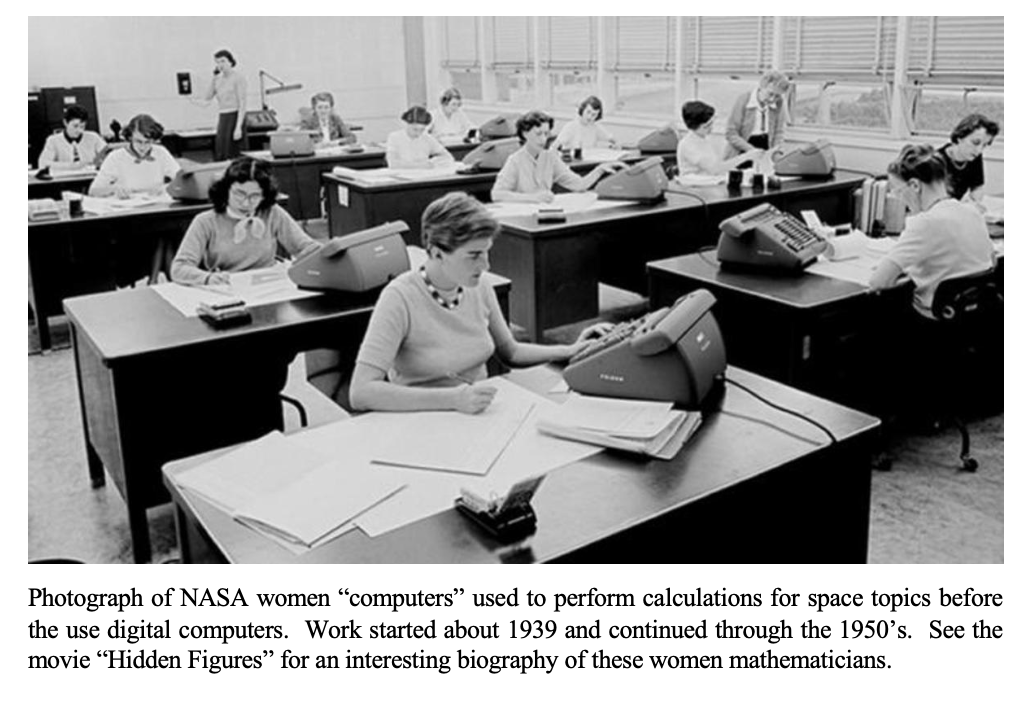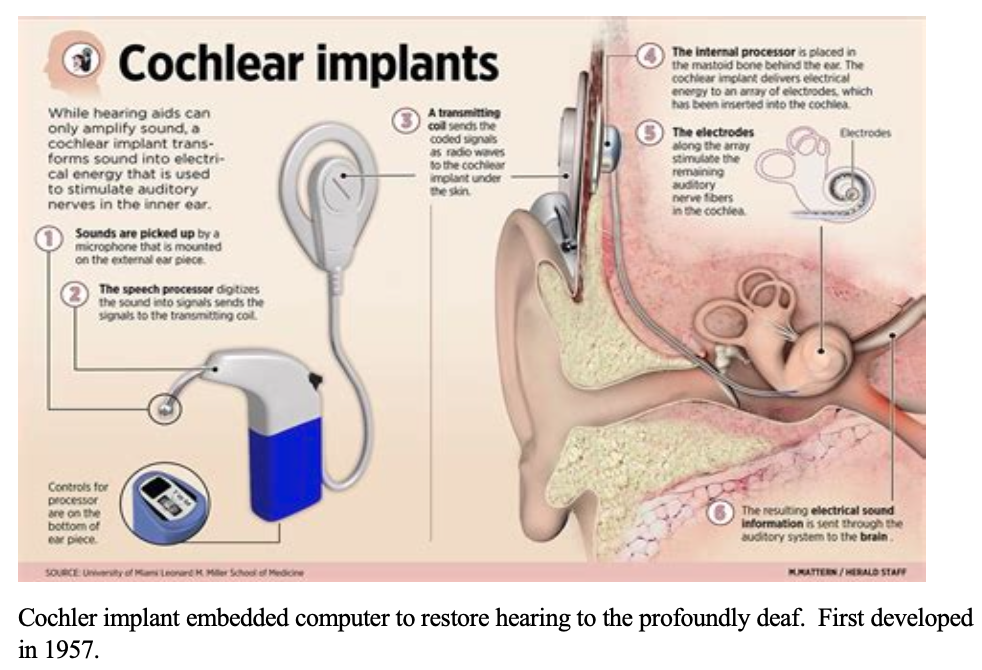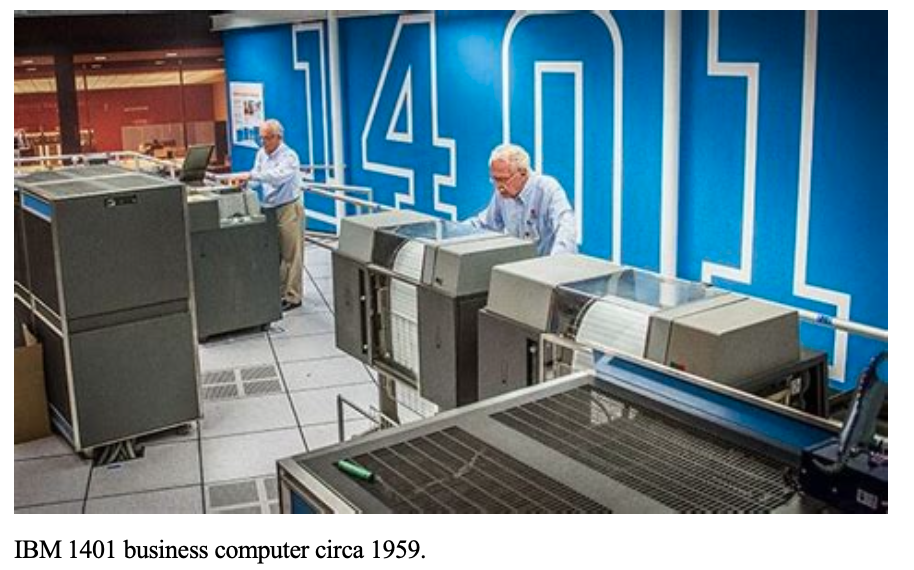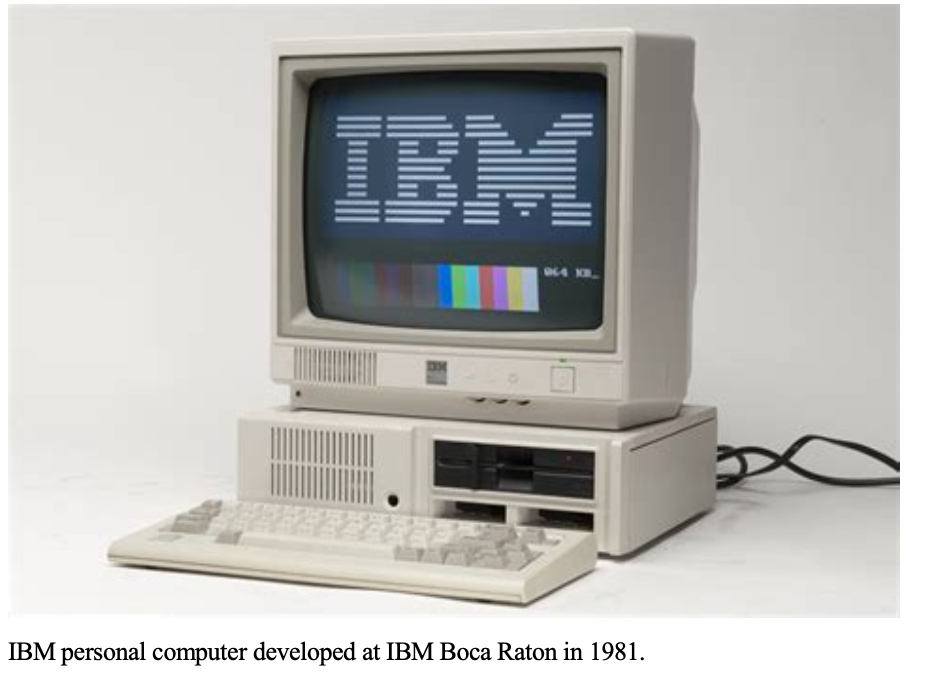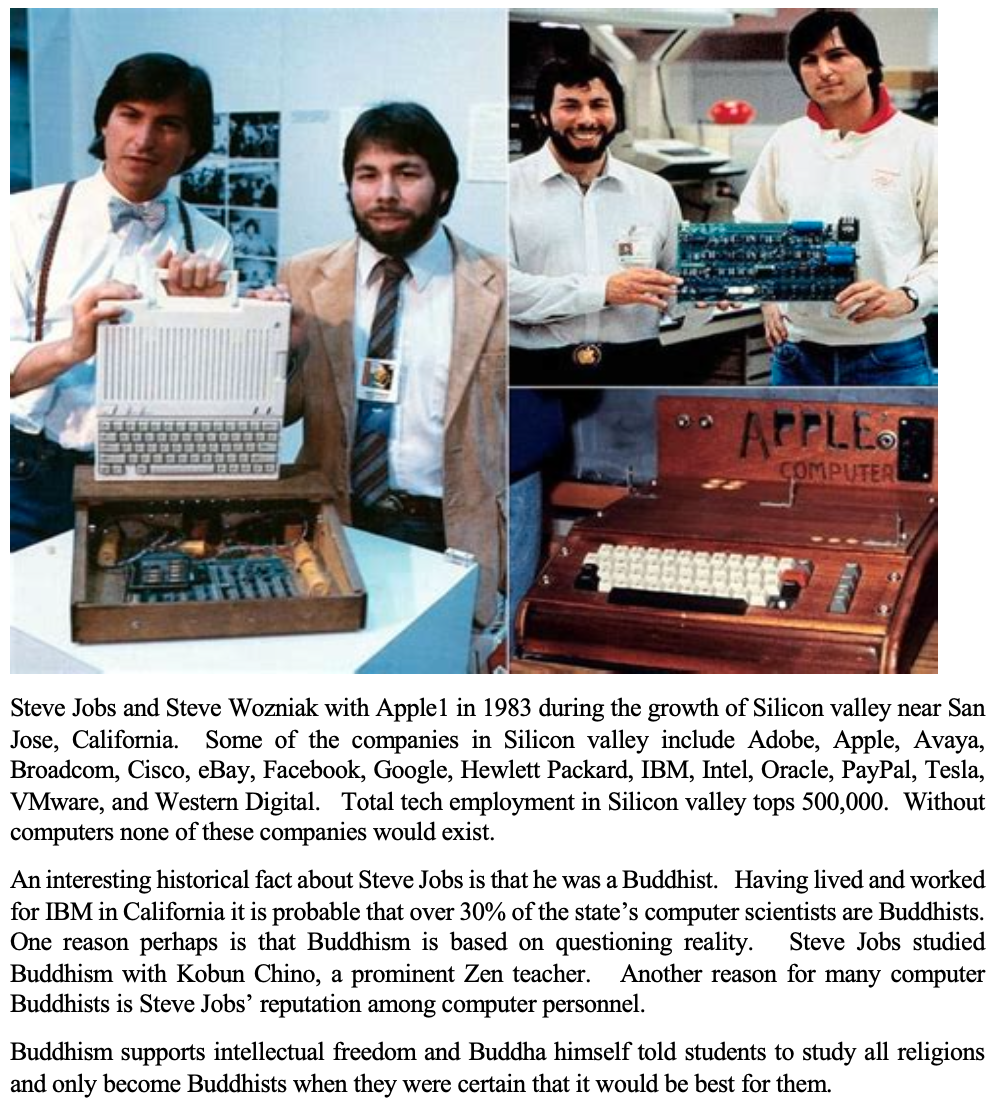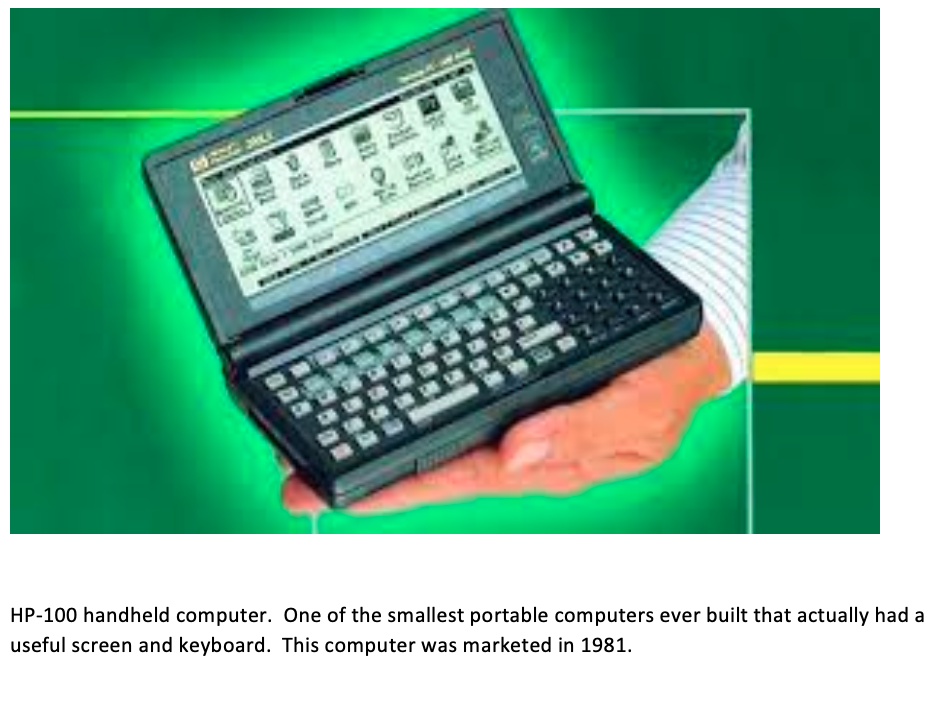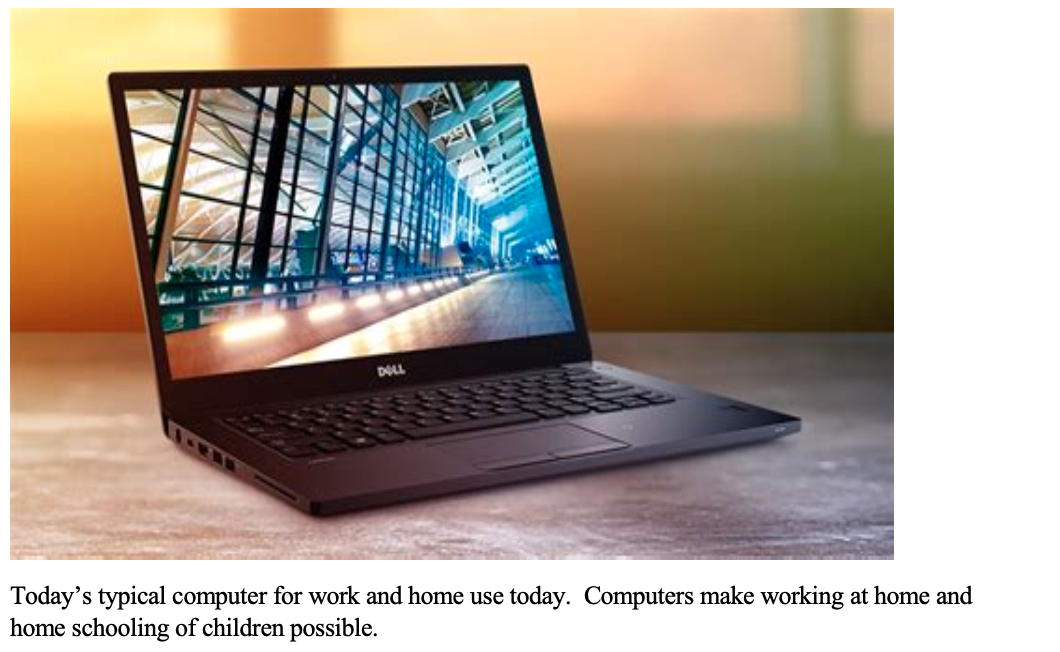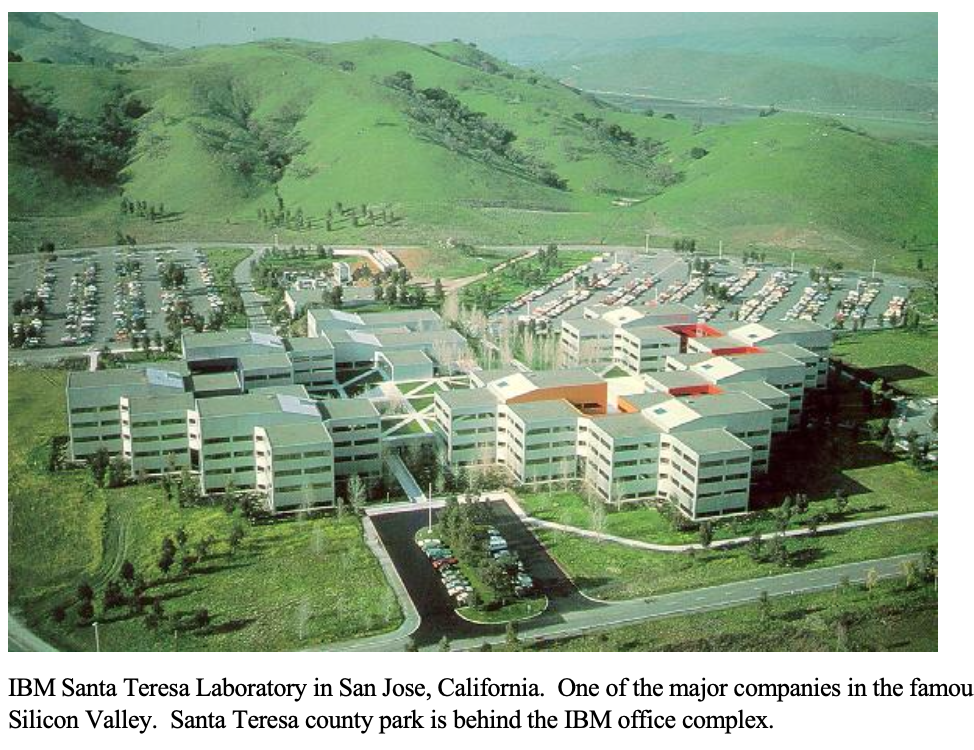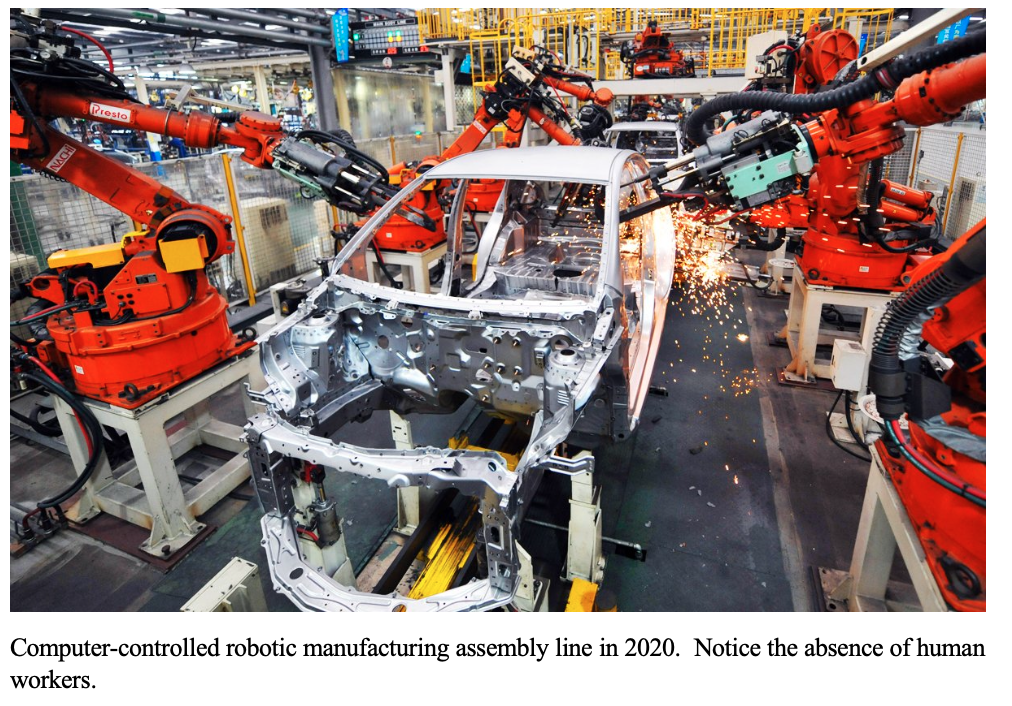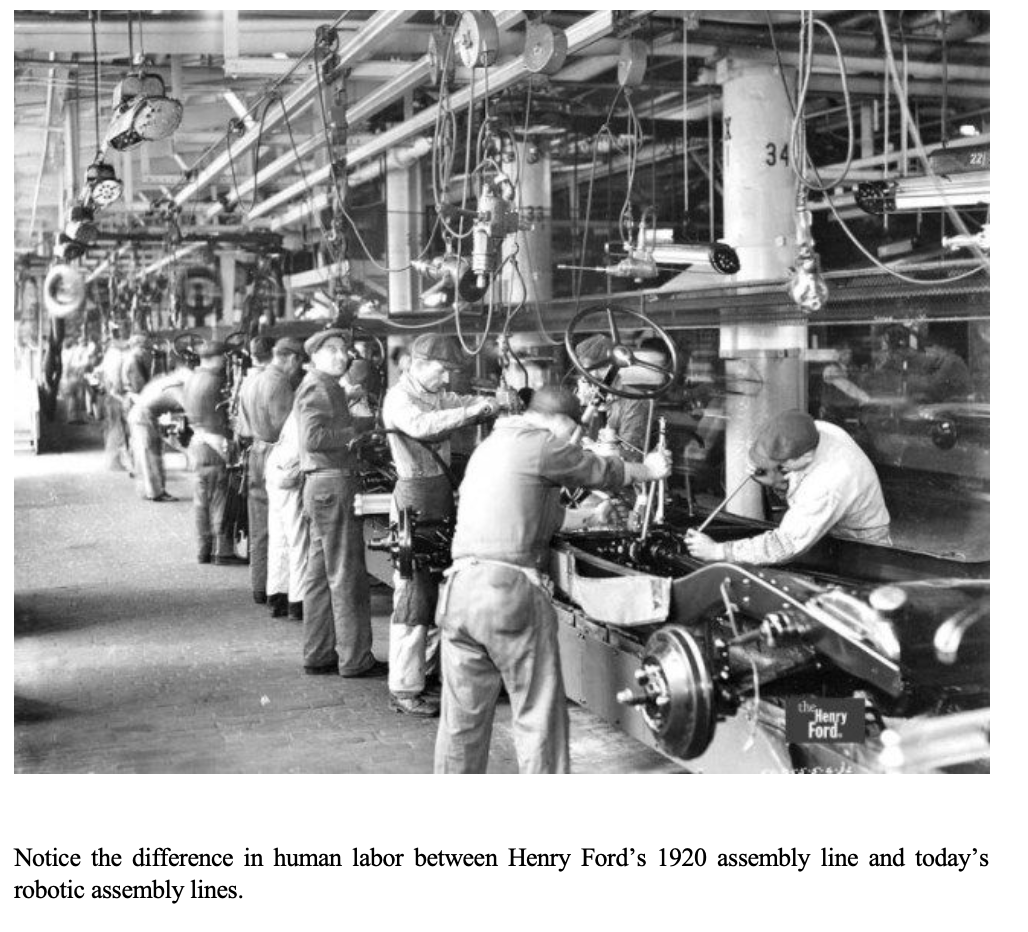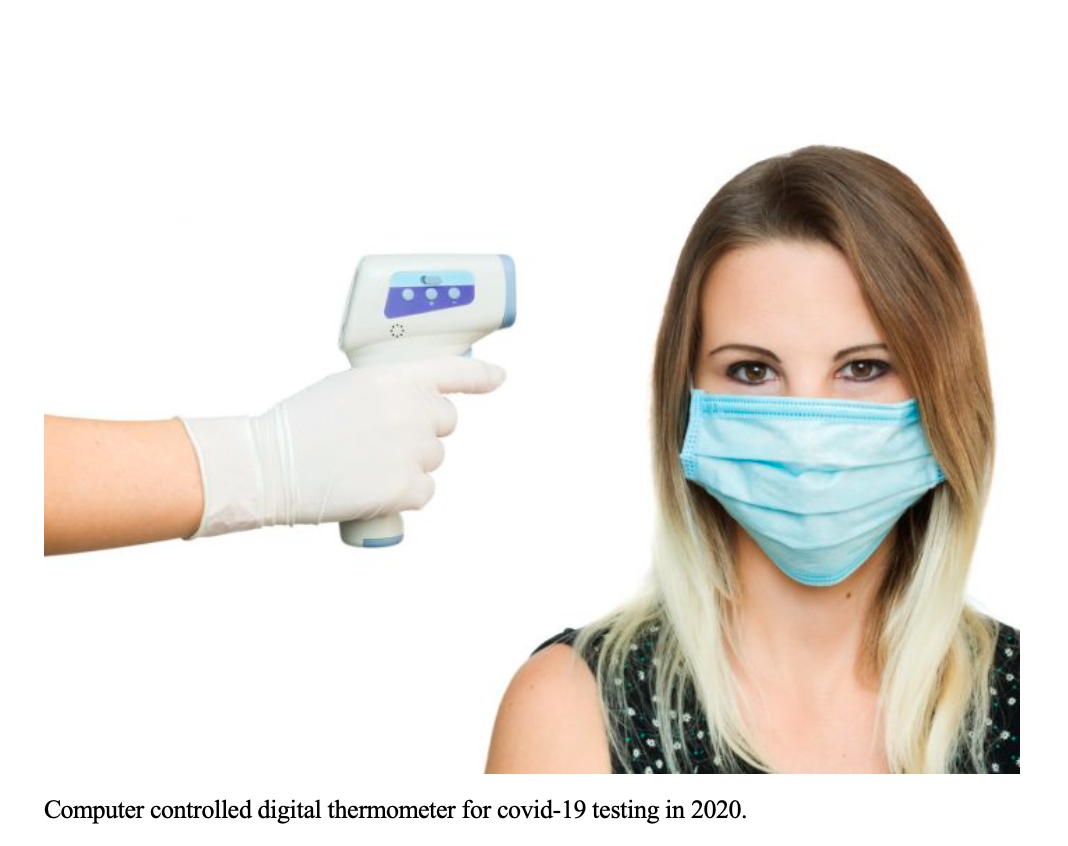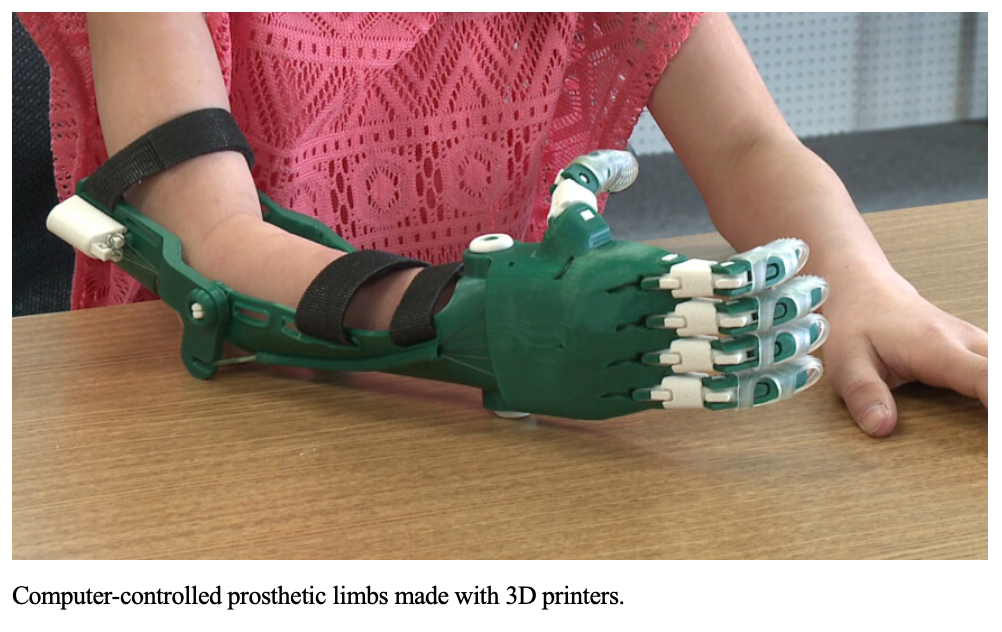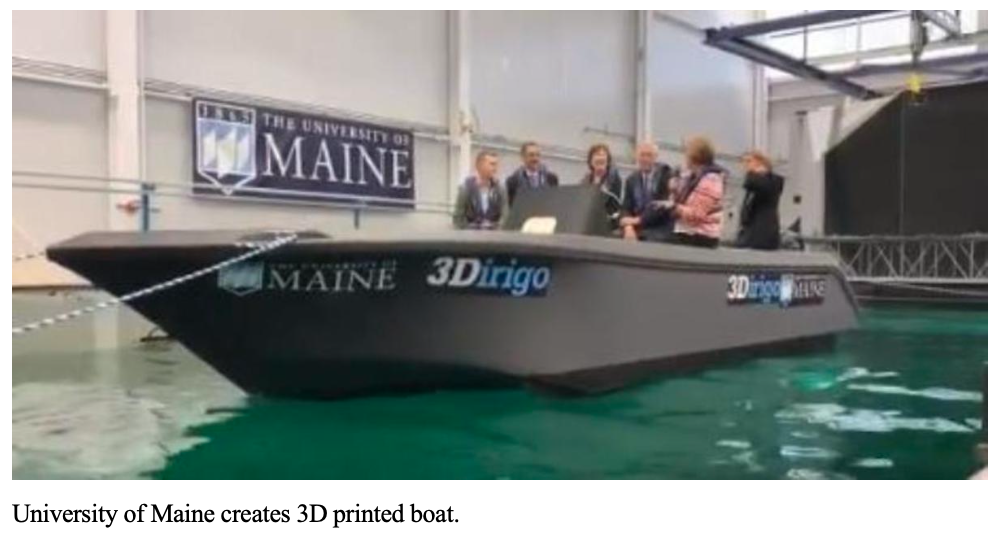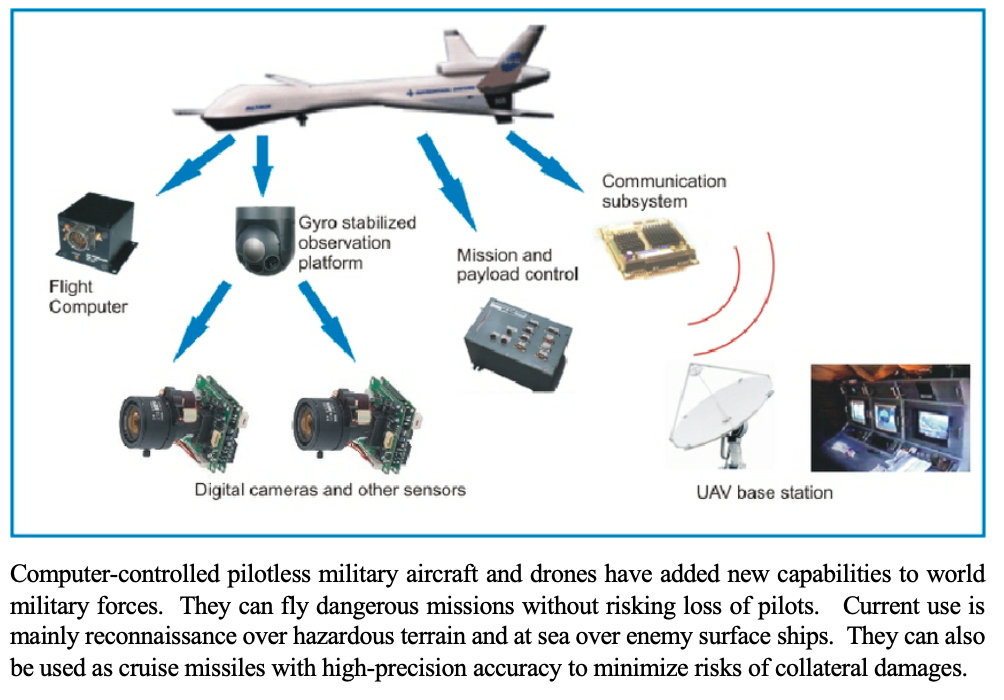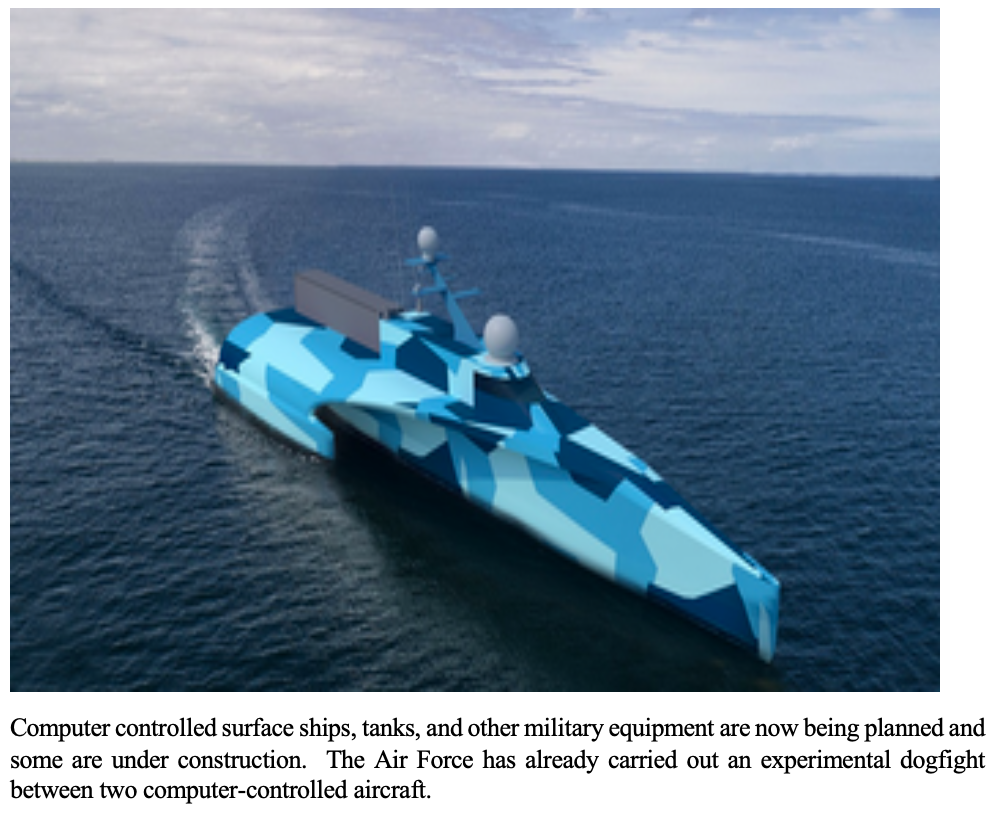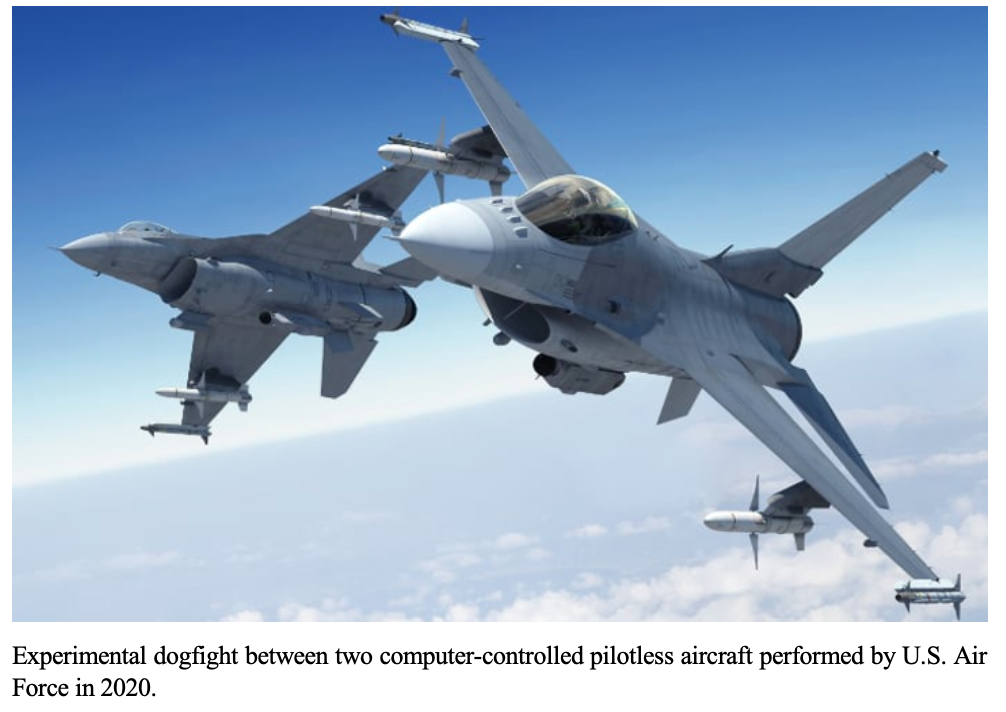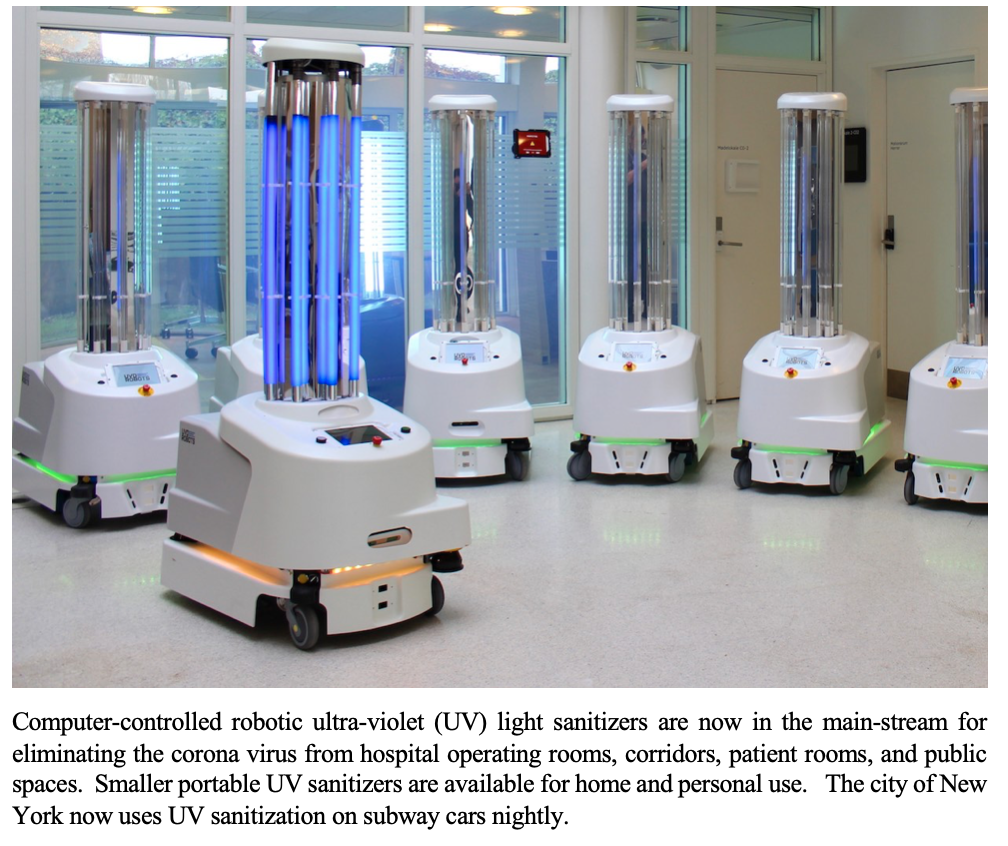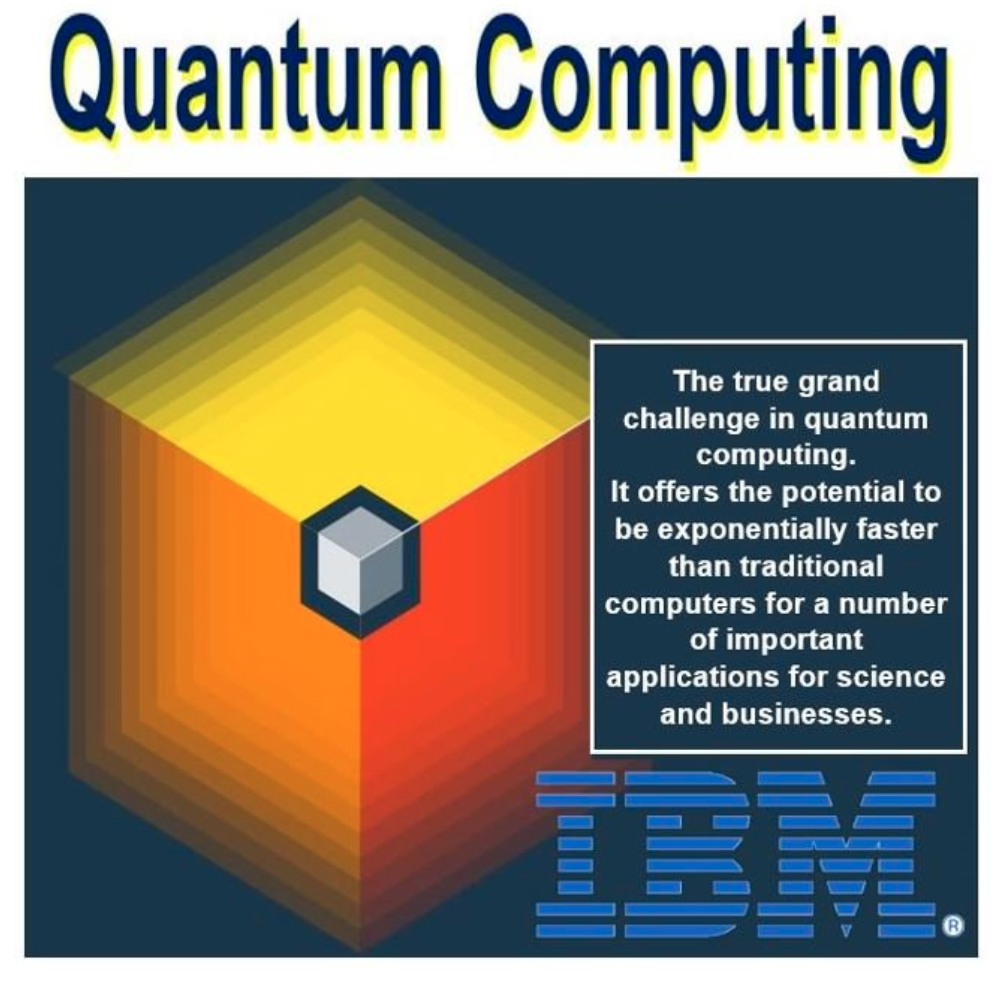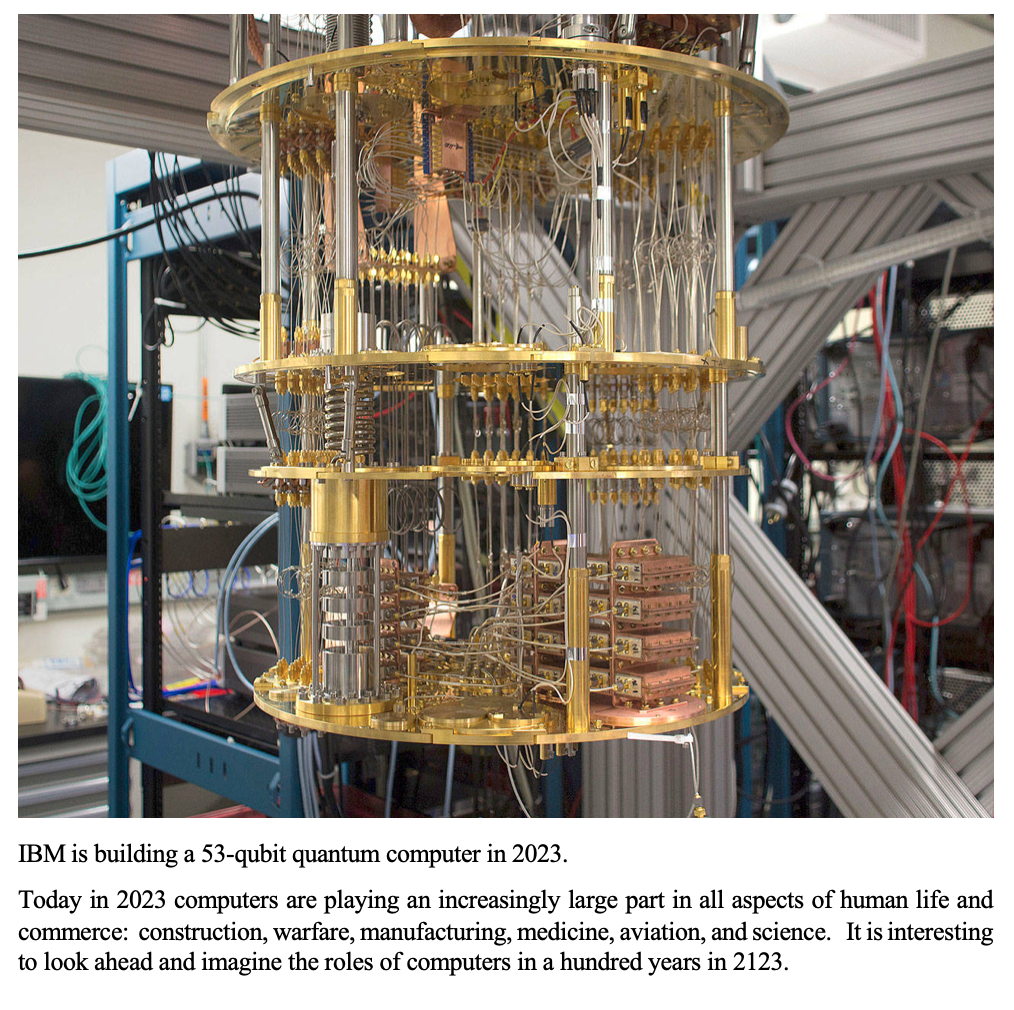 This talk starts before computers with the development of numbering systems and in particular the development and use of the number 0 and of negative numbers. The report also discusses the evolution of mathematical operations such as multiplication and division, as precursors to mechanical computation. The practical use of numbers in fields such as architecture, astronomy, road building, and navigation will be discussed.
This talk starts before computers with the development of numbering systems and in particular the development and use of the number 0 and of negative numbers. The report also discusses the evolution of mathematical operations such as multiplication and division, as precursors to mechanical computation. The practical use of numbers in fields such as architecture, astronomy, road building, and navigation will be discussed.
The talk discusses interesting ancient numbering systems and calculation methods used by the Sumerians, Egyptians, Chinese, Greeks, Romans, Incans, and other ancient cultures. It also discusses mathematical curricula at early universities such as Nalanda in India and early libraries such as Alexandria and Cordoba.
The talk examines mechanical computing devices starting before the Antikythera mechanism and moves forward to the abacus, the Peruvian Quipu, Napier’s bones, the Pascal mechanical calculator, Boole and Babbage difference engine, slide rules, mechanical calculators, pocket calculators, early digital computers, and the recent evolution of computers and supercomputers such as the IBM Watson.
The talk examines specialized computers such as automobile autopilots, aircraft autopilots, and computers used on weapons systems such as cruise missiles and anti-ballistic defenses.
Programming languages and software development methods are discussed briefly starting with assembly language and moving to modern high-level languages such as Java, Ada, and C#. Countess Ada Lovelace, Lord Byron’s, daughter, is regarded as the first programmer circa 1840.
The talk also looks at specialized surgically implanted computing devices such as cochlear implants and cardio pacemakers. Future possibilities for artificial sight might occur within 25 years.
The mid part of the talk will deal with IBM computers starting with large mainframes and then moving to the development of the IBM personal computer in 1981. IBM has been the dominant computer company since the industry began. Other computer companies such as Digital Equipment (DEC), Apple, Honeywell, Sperry, etc. are also discussed.
Personal computers in the two forms of tablets and desktops are also discussed, since they have become the workhorses of modern business and government operations. The book covers the roles of computers in business and government operations for both routine operations such as payrolls and accounting and for more advanced topics such as competitive analysis and studies of market penetration.
Another topic discussed will be the emergence of web-browsers which led to the emergence of Amazon and other on-line retail vendors. Today on-line sales are growing rapidly while many conventional retail markets are failing.
Late discussions consider the future of human computing with wearable devices such as smart watches and surgically implanted computing devices. The emergence of artificial intelligence (AI) is also discussed as are topics such as autonomous robots and the use of computers in space exploration.
Statistics will be provided on computer usage per capita by country and by industry. Today every major corporation and government agency depends upon computers for day-to -day operations and also strategic planning for the future.
Computer usage in modern medical practice will be discussed. Without computers many modern medical diagnostic tests such as CAT scans and MRI would not be possible. Robotic surgery is becoming a standard for many surgical procedures.
The report also discusses the evolution of computer networks and the world-wide web, and the book provides interesting quantification of computing and network usage by country. It also discusses social networks such as Facebook and Linkedin.
Because computer crime has become a major issue, the book also has information on avoiding hacking, data theft, and other common types of computer crime. Because of the importance of computer crime, special attention is paid to topics such as interfering with elections, ransom ware, denial of service attacks, and other serious threats to private and government computers. Data is provided on the countries that originate the largest numbers of attacks and the countries which receive the largest numbers of attacks.
The Covid-19 pandemic of 2020 has disrupted global business and government operations and killed millions of people. The use of computers for medical studies, vaccine development, company staffs working from home, and remote schooling of children has enabled some aspects of daily life to continue. Without almost universal access to computers business and government operations might have shut down completely. New ways of meeting such as Zoom and chat rooms are making work and education from home technically possible if not highly effective.
The report considers future uses of computing and the role of computers in artificial intelligence (AI). The book also deals with modern peripheral devices such as 3D printers; finger-print scanners; facial recognition, and others. The book will discuss topics such as robotic surgery, autonomous robots; computers used in space exploration; and computers used in national defense.
Computers are powerful tools for governments, private business, public business, and individuals but they have also become powerful tools for international crime and espionage.
The Roles of Humans, Computers, and Artificial Intelligence circa 2123.
The impact of computers on human occupations has been profound. When the author young there were no credit cards and purchases were made by cash. There were no electronic books or magazines and everything we read was printed on paper. Automobiles and other manufactured products were built by human workers. The most efficient kinds of construction were assembly lines where each worker only had to know a limited number of actions.
Today credit cards have replaced cash for most retail sales. E-books are now as popular as paper books and often less expensive. Autos and other complex devices are still constructed on assembly lines but robotic tools have replaced most human workers. Home construction is still largely manual but 3D printed houses are starting to appear experimentally.
It is interesting to look ahead a hundred years and try and envision the roles of computers and people in 2123.
The first question about future roles will be what computers will be capable of accomplishing in 2123. Following are some hypothetical possibilities for the United States:
- Manufacturing of complex devices such as autos may be more than 90% computerized.
- 3D printed homes may approach 50% of U.S. home construction.
- Self-driving automobiles may approach 75% of U.S. auto sales.
- Robotic surgery may be used in over 75% of common medical operations.
- Artificial intelligence can be used to convert novels into movies automatically.
- Three dimensional interactive movies might be possible.
- Music synthesizers will be able to duplicate all instruments and even orchestras.
- Military and commercial aircraft will have sophisticated autopilots.
- Robotic warships and robotic aircraft without crews will be added to arsenals.
- Urban traffic systems will synchronize traffic lights to optimize travel in crowded cities.
- AI will aid human authors in creating non-fiction research papers and books.
- AI will aid human fiction authors but may even compete with human authors.
- AI will be used by criminals to imitate live persons in attempts to steal.
All of these changes due to computers will raise social issues that don’t exist in 2023. The basic issue is what kinds of work will people do when computers have taken over many complicated jobs in fields such as home construction and manufacturing? Next it is interesting to consider the industries where computers in the future will either cause decreases in working populations or increases.
At the start of 2023 there are about 131,800,000 workers in the United States. The most important question raised by computers is whether the working population will increase or decrease by 2123.
The industries that are likely to experience a decrease in workers are those where computers are best able to replace human beings. A sample of industries where computers are displacing human workers include:
Industries Facing Declines in Workers Due to Computers
- Aircraft manufacturing
- Automotive manufacturing
- Durable goods manufacturing
- Clerical work
- Delivery services (replaced by self-driving vehicles)
- Electronics manufacturing
- Home construction
- Retail sales staffs
- Taxi drivers (replaced by self-driving vehicles)
- Translators to other languages (replaced by computer translation)
Industries Facing Increases in Workers Due to Computers
- Arts and graphic design
- Authorship of books and journal articles
- Computer games
- Computer manufacturing
- Defense engineering of new weapons systems
- Law (new kinds of litigation for damages caused by robotic devices)
- Music composition
- Robotic device engineering
- Software engineering
- Research (due to the need to predict other disruptive technologie)
Industries Where Computers Have Provided the Greatest Benefits
- Authorship of books and journal articles
- Defense and military preparedness
- Education
- Government operations
- Medical practices
- Musical composition
- Real estate
- Research
- Retail sales from on-line stores
- Travel
It is interesting to consider what daily life in the United States might be like in 2123 compared to daily life in 2023. Following sections of this talk show some hypothetical scenarios about the impact that computers will have on future life and work.
Let us now consider the impact of artificial intelligence (AI) on the world of today and tomorrow. There are benefits from AI but also hazards, as shown below:
Current Beneficial Uses of Artificial Intelligence
- Customer service
- Retail sales support
- Medical device monitoring
- Automated manufacturing
- Driverless vehicles
- Navigation support for automobiles, trucks, and aircraft
- Quality control for manufacturing complex devices
- Scientific research
- Augmenting human instructors with AI lectures
- Recommendations of similar books to those who order books online
Future Beneficial Uses for Artificial Intelligence
- Urban traffic controls and rerouting drivers away from blockages
- Routing emergency vehicles to fastest routes
- Continuous medical monitoring of medical patients
- Converting books into television shows and movies
- Military threat recognition and target acquisition
- Pilotless combat aircraft
- Pilotless reconnaissance drones
- Torpedo guidance and target seeking
- Building protection systems using night cameras and motion sensing
- AI lectures at high school and university levels
Dangerous and Criminal Uses of Artificial Intelligence
- Telephone scams by imitating human voices based on tapping telephone calls
- E-mail scams that imitate friends and family
- Computer scams that seek banking and personal information
- Spy satellites and spy balloons
- Weapons system controls
- Deep fakes
- Password guessing
- Fake news reports
- Targeted phishing
- Fake websites that offer low-cost items
Already in 2023 ChatGPT and other AI tools can be used to write stories and novels. But they can also be used to imitate human voices and attempt to get money or personal information illegally. AI is going to have as much impact on human lives in the future as computers have already had!
The World of Computers and Artificial Intelligence in 100 Years
Agriculture in 2123
Some of the possible changes in agriculture will include robotic harvesting equipment, robotic drones for pest control, and highly automated delivery systems of grain and crops from farms to wholesalers to retail stores. Human work in agriculture has already declined over the past 50 years as farm equipment improved. It may also be possible to produce 3D printed food products that may be marketed in tubes like toothpaste, or possibly sold in restaurants in various artistic shapes such as spirals or 3D models.
Authorship in 2123
Authorship of books and journal articles has already been impacted by computers. Only a few years ago books were written on paper using typewriters. Today almost all books are written on computers. In the future artificial intelligence might be of use to authors by identifying similar books or articles already published. In addition, computers could be used for checking copyrights of art and illustrations. Even better, computers could create new art for books and articles based on the preferences of the authors. Already in 2023 AI tools such as ChatGPT can be used to write stories and novels.
Crime in 2123
The most obvious impact of computers on crime has been the huge increase in scamming and theft of things like credit card numbers. In the future computers can be used to help prevent crimes by such methods as having better cyber security of financial systems. It would also be possible to have robotic drones flying over highways to identify speeders and those violating traffic laws. In fact it would be possible to communicate with drivers and warn them they are about to be ticketed or pulled over. It might even be possible to have drones control automobiles remotely. Home alarm systems and automobile theft control should improve significantly by having cameras that can evaluate possible thefts or break ins and contact the police automatically. Even worse will be AI systems that imitate human voices and images and can be used to steal or gain access to bank account data.
Defense in 2123
By 2123 the military services of the world will probably be equipped with thousands of pilotless aircraft and even autonomous patrol boats that don’t need human crews. Satellites connected to computers can monitor the entire world and report on topics such as troop movements or launches of missiles. It will also be possible for local commanders to have 3D views of battlefields taken from drones or satellites. It is also possible that advance AI systems will be able to integrate battlefield data globally and help human commanders make optimal choices for deployment of troops and weapons systems, many of which will be AI controlled.
Education in 2123
Some of the ways education has been improved by means of computers include teaching foreign languages, improving the availability of historical information, and using computers for remote learning. AI lectures are possible in 2023. Unfortunately some students are already using AI to write term papers.
Entertainment in 2123
Computers have been used for years to stream music and movies to consumers at home. E-books can also be ordered and downloaded to computers or reading devices. In the future computers aided by artificial intelligence might be able to convert novels into movies, create audio books, and even construct 3D movies where viewers can interact with fictional characters on the screen.
Home Building in 2123
Already in 2023 some homes are being constructed using 3D printers, as illustrated earlier in this report. By 2123 using 3D printers should be the dominant method of home construction. It is also possible that these homes can be assembled by computerized robots, although under human control.
Home Life in 2123
Some possible uses of computers for home life in 2123 might include direct controls of home hearing and air conditioning that is linked to actual weather conditions. Even if home owners are away on vacation heat and air conditioning could be changed to meet local conditions such as raising the heat when it gets cold outside. Home security systems will also improve and probably be directly linked to police departments. The same is true of fire alarms.
Litigation in 2123
As of 2023 AI research into criminal activities of named individuals has sometimes contained errors of fact and even citations and quotes from documents that don’t exist. This raises the question as to whether a computer or AI system might be sued for libel or defamation of character. Assuming that these errors can be corrected and no longer occur, then computers and AI can probably provide the courts and attorneys with relevant information faster than legal clerks can find it. For criminal cases, security cameras at banks and office buildings connected to computer and AI systems can probably identify careless thieves who don’t wear masks or disguises.
Medical practices in 2123
Medical practices have already benefited from computers by means of CAT scans, MRI, and diagnostic equipment. In the future patients might have small implants or wearable devices that monitor heart rate, blood pressure, and other conditions and report harmful changes to medical personnel. Robotic surgery has already become commonplace and will no doubt increase in range of kinds of operations that can be performed by robots.
Manufacturing in 2123
Even before 2023 manufacturing has been impacted by computers that are used for building complex devices such as automobiles. By 2123 robotic assembly is likely to be the norm for almost all mechanical and electronic devices.
Office Work in 2123
By 2123 it might be possible for office workers to be located anywhere in the world. In fact teams of workers might be able to cooperate using 3D virtual office environments that look like regular offices but in fact the workers could be widely separated and even located in different countries.
Real Estate in 2123
It is very likely that 3D printed homes made of plastic will be the dominant form of home construction. Real-estate agents will be able to show potential clients animated 3D views of homes that will probably start with an aerial view of the home and the neighborhood and then move to the house. Clients can move a cursor or even use voice commands to change the views from room to room. It might also be possible for closings to be held via Zoom or the equivalent. Probably in 2123 the Zoom meetings will be in 3D format. It would even be possible to show clients additional information such as local retail stores, medical facilities, parks, schools, and other places of interest.
Scientific Research in 2123
Before computers research meant spending hours reading paper documents and looking for facts and evidence. Now in 2023 computerized searches are the usual starting place for scientific research. By 2123 no doubt universities and researchers can be linked together. Chemists, physicists, and medical researchers will be able to scan all available information and also communicate with other researchers on topics of mutual interest.
Shopping in 2123
Already in 2023 shopping for many products via computers linked to vendors such as Amazon are common. By 2123 it is probable that most retailers will offer computerized shopping. For example a grocery store might offer 3D views of food products that can be selected and then delivered to consumers. Consumers might use AI to create profiles of items they need and since smart appliances such as refrigerators will probably know what is stored, orders can be sent automatically for replacement of staples such as milk and eggs.
Traffic Control in 2123
It will be possible for all traffic lights in urban areas to be synchronized under computer control. Many vehicles will be self-driving and connected to central traffic computers so they can be routed to destinations on roads with the least traffic. It may be that in 2123 few people will need to own automobiles. Possibly fleets of self-driving cars could be available as needed. Perhaps small individual electric carts could replaced automobiles for local trips within a few miles of residences or offices. Probably all vehicles will be electric or powered by hydrogen or some other non-polluting product that does not damage air quality. Taxis in urban communities will probably be self-driving with fees paid by credit cards.
Travel and Recreation in 2123
By 2123 it should be possible to have animated 3D views of vacation destinations such as Bora Bora or Tahiti. In addition all of the features and amenities of cruise ships can be visited using 3D images.. It is already possible to play games against computers or to use computers and Zoom meetings for things like chess matches where the opponents are not in the same location. Probably new kinds of 3D virtual games will be developed to take advantage of the increasing sophistication of computers. With the use of artificial intelligence it might be possible to develop 3D interactive games where opponents are not humans but rather simulations controlled by a computer.
Summary and Conclusions
Today in 2023 computer ownership and computer usage are almost universal. Every aspect of human life has been impacted by computers, which provide services never seen before in history such as emails, credit card processing, cochlear implants, air-traffic control, self-driving automobiles, and robotic surgery.
No doubt new kinds of computers, more sophisticated artificial intelligence (AI), and new uses for computers are still on the horizon. The author has worked with computers and computer programming for over 50 years and it has been exciting to see so many computer advances.
The next 100 years will also see changes and advances due to computers and artificial intelligence (AI). Some of these may not be beneficial such as computers displacing human workers in fields such as automobile and home construction. Other changes may benefit human life and safety such as the increasing sophistication of robotic surgery. But unfortunately new kinds of computer and AI driven crime will occur, and future wars will probably use computerized weapons systems under AI control.
Capers Jones’ Published Books from 2022 to 1978
- Software Development Patterns and Anti-Patterns; Taylor Francis, 2022
- A Guide to Selecting Software Measures and Metrics; Taylor Francis, 2017
- Software Methodologies: A Quantitative Guide; McGraw Hill 2017
- The Technical and Social History of Software Engineering; Addison Wesley, 2013
- Quantifying Software – Global and Industry Perspectives; CRC Press, 2012
- The Economics of Software Quality, Prentice Hall, 2011
- Software Engineering Best Practices; McGraw Hill, 2009.
- Applied Software Measurement, 3rd edition; McGraw Hill, 2008
- Estimating Software Costs; McGraw Hill, 200
- The History and Future of Narragansett Bay; Universal Publishers, 2006
- Software Assessments, Benchmarks, and Best Practices; Addison Wesley Longman, Boston, Ma; 2000
- The Year 2000 Software Problem, Addison Wesley Longman, Boston, MA; 1998.
- Software Quality – Analysis and Guidelines for Success (International Thomson Computer Press; Boston, MA; 1997).
- Patterns of Software System Failure and Success; International Thomson Computer Press: Boston, MA; 1995).
- Assessment and Control of Software Risks; Prentice Hall, Englewood Cliffs, NJ; 1994.
- Applied Software Measurement; McGraw Hill, 1991
- Programming Productivity: Steps Toward a Science; Prentice Hall, 1993
- Programming Productivity Issues for the Eighties; IEEE Press, 1981.
- Software Quality Today; IBM Corporation; 1978
- Software Engineering Best Practices; IBM Corporation 1978
Unpublished books with completed manuscripts in 2023
- Florida Inventions and Inventors; Book discusses famous inventors who lived in Florida such as Thomas Edison, Henry Ford, Harvey Firestone, Hedy Lamarr, Jeff Bezos, Ms. Potter Palmer, John Ringling, Edward Leedskalnin, and others. The first digital computer was built by John Atanasoff in 1939. IBM’s first personal computer was built at IBM Boca Raton in 1981. Draft is 229 pages, 49,000 words; 60 illustrations.
- Florida Natural History from the Last Ice Age (manuscript complete for publication in 2023). Starts with animals and plants living in Florida 15,000 years ago. Then discusses Florida’s diverse scenery such as the 720 fresh-water springs, Lake Okeechobee, coral reefs, and the Everglades. Also discusses the tracks of hurricanes for the past 100 years and includes data on the possible flooding of Florida coastal cities such as Miami within 100 years due to global warming. Draft is 257 pages; 55,000 words; 110 illustrations.
Sample of Journal Articles from 1978 to 2022
Capers Jones published more than 200 journal articles between 1978 and 2023 in magazines such as Scientific American, IBM Systems Journal, Datamation, Crosstalk, IEEE Transactions on Software Engineering, Cutter Software Journal, and others. This list primarily shows a sample of one article per year even though several might have been published in the same year. Some of the titles include:
- “Achieving Software Excellence”; MITRE Internal Journal; June 2020
- “Early Sizing and Estimating”; IEEE Software; May 2020
- “High Efficiency Defect Removal Efficiency”; IEEE Software; August 2019
- “Function Points as a Universal Software Metrics”; IFPUG Journal; July 2018
- “Challenges of Software Project Management”; IEEE Computer; June 2017”
- “Corporate Software Risk Reduction”; ITT Journal; August 2016
- “Defenses Against Software Litigation”; IEEE Computer; March 2015
- Software Benchmark Analysis” IEEE Software; June 2014
- “Estimating Tool History”; IEEE Software; August 2013
- “Software Measurement Errors”; IEEE Software; December 2012
- “Software Quality Economics”; IEEE Software; January 2011
- “Economics of Software Outsourcing”; Datamation; November 2010
- “Quality Control for Embedded Software”; IEEE Computer, May 2009.
- “Preventing Software Failure: Problems Noted in Breach of Contract Lawsuits”; U.S. Air Force software journal Crosstalk, June 2008.
- “Software Defect Potentials”; Crosstalk, Air Force Technology Support Center; December 2007
- “Social and Technical Reasons for Software Project Failure”; Crosstalk; Air Force Technology Support Center, June 2006.
- “Software Engineering State of the Art”; IEEE Software; February 2005.
- “The Evolution of Defense Software”; Crosstalk; Air Force Technology Support Center; November 2004
- “Constructing a Data Point Metric for Measuring Data Quality; Cutter IT Journal; January 2003
- “Why Software Cost Vary”; Datamation; December 2002.
- “Conflict and Litigation between Software Clients and Developers”; IEEE Computer; April 2001.
- “Analysis of Damages due to the Y2K Problem”; IEEE Software; December 2000.
- “Sizing Up Software”; Scientific American Magazine; December 1998
- “Measuring Programming Quality and Productivity”; IBM Systems Journal, Vol. 17, No. 1 (1978).
BIO:
Capers Jones, Vice President and CTO, Namcook Analytics LLC
Email: Capers.Jones3@Gmail.com
Web: www.Namcook.com

